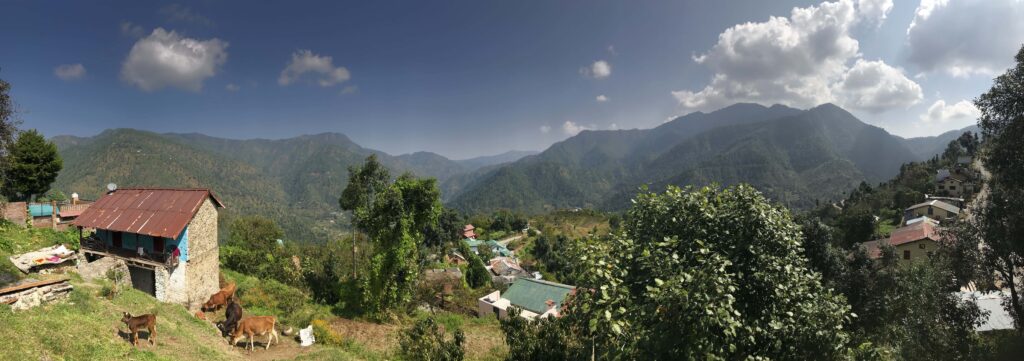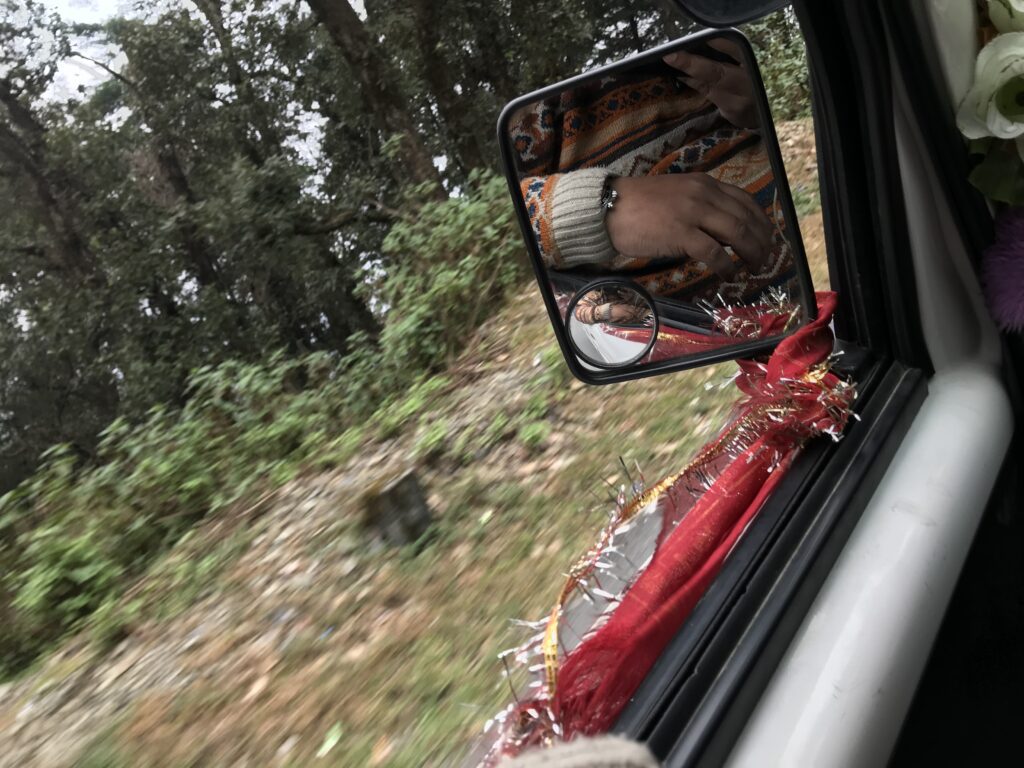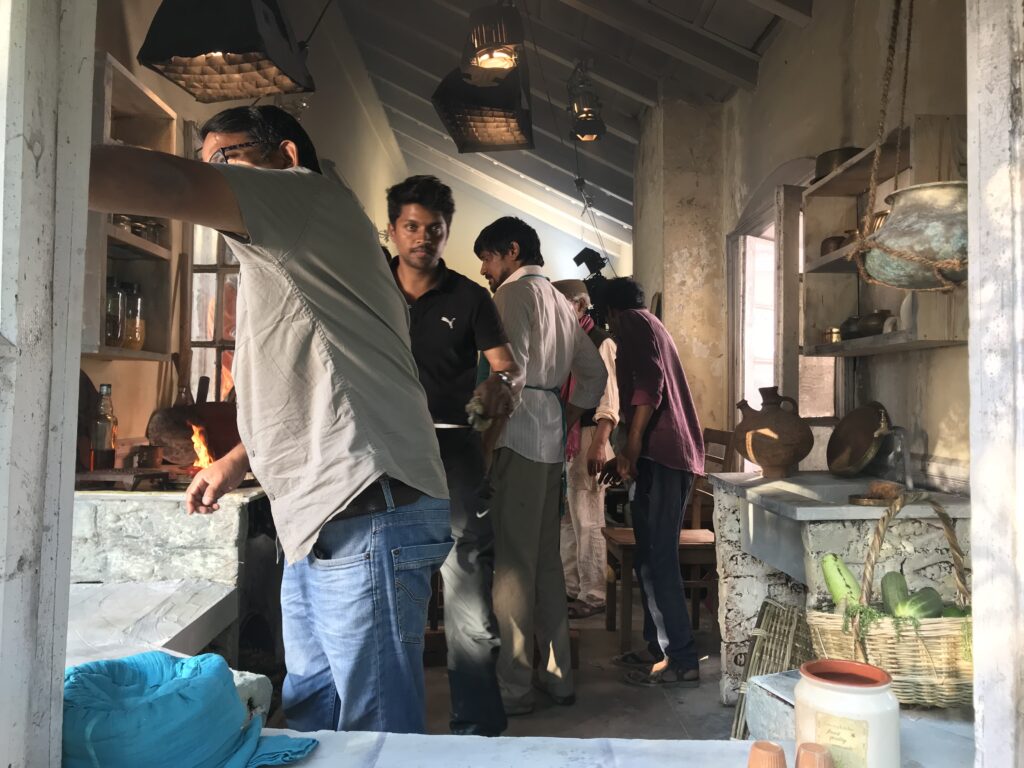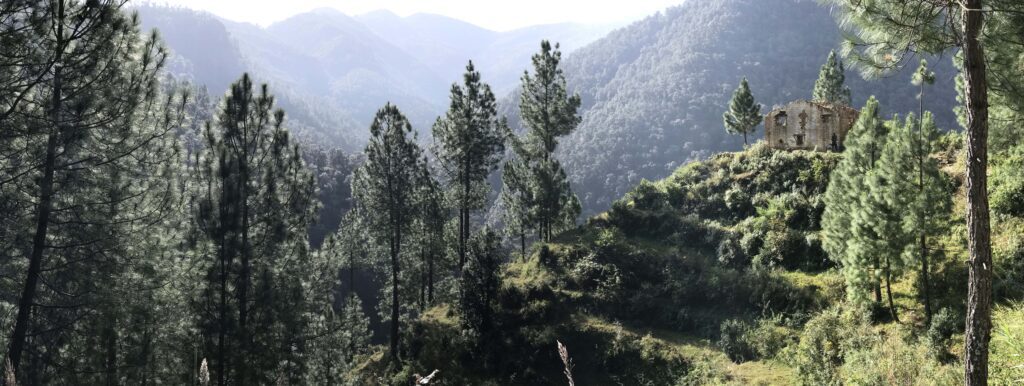Josef – Born in Grace was the first film on which I worked in a professional capacity. So, fancy title notwithstanding, I was on the crew to pick up any slack that couldn’t be covered by anyone else. I approached this as an opportunity to learn about a job and industry that I only really knew about from TV shows and movies.
Something I learned quickly was that my job involved a lot of “hurry up and wait.” The other thing that really stood out to me was just how much was up in the air when we began shooting. Vaidehi has a great story about the Josef’s signature coat, and the adventure of finding this signature piece of clothing after filming began. There were several roles which hadn’t been cast. And a few of the locations were also up in the air.
We had scouted multiple abandoned buildings in Talla Ramgarh and even shot scenes in and around them, but nothing was quite working out on film the way Lulu Kaka1 or Sudheer2 wanted it to. This ruin is where Josef often finds himself, and is the silent partner in many of his monologues. It also needed to look like people could believe it was haunted. This ruin would be a character in the film.
We found buildings that used to house refugees fleeing from oppression in Rajasthan, and we found dilapidated quarters that used to house government employees. Nothing looked like the kind of khandar3 – the ruin – that they wanted. Everything looked too clean, too solid. Nothing gave us the impression that it would crumble if you sneezed in it, but also that it would still be standing long after the world no longer had people in it. Eventually, we found a location that worked and when you see it on screen, you really can’t imagine any other location that would suffice.
Like the khandar, Josef and Maularam’s kitchen and room was very important to the film. We couldn’t have a location that didn’t feel true to the characters. We had searched for locations without any luck during the recce and the first half of our schedule. Our local contacts brought us suggestions, but nothing clicked. Unlike the khandar, we wouldn’t have the opportunity to test the scenes set in the kitchen at multiple locations. It would have to be dressed by the art department, and look like somewhere that people had lived and worked in for at least twenty years.
On a Friday, after we moved the crew from Ranikhet to Ramgarh, Lulu Kaka, Sudarshan4, Sudheer, and I took a day to search for a location that would work. It had to be something that looked the part, could be dressed quickly, and be suitable for interior and exterior shots. Most importantly, it had to be available.
We had to find something that day or the shoot would be delayed. We were shooting in October, during the festival season, and our crew was asking us when we thought they would be able to return to their families every day5. No one wanted to spend the festival away from them.
We left immediately after an early breakfast, and looked at three or four locations. It was slow going6. Then, as we were nearing lunch, we found a house that seemed to check off all our requirements – a wonderful, old dak bangla. It looked like it had been there for ages7. It matched how Father O’Hara’s house looked. There were great indoor and outdoor areas for shooting, and we would only need to dress one of the rooms.

This is where the importance of local contacts comes to the fore. The building was owned by the Uttarakhand Public Works Department, and the caretaker didn’t have a problem with use shooting there for a few days, as long as we got permission from the Executive Engineer. After making a few phone calls, we determined it would be possible to get permission. The only catch was that the Executive Engineer was the only person who could give us the necessary permissions and he was due to leave for Dehradun for ten days at 3 P.M.
We rushed back to the hotel where we were staying, wrote up an official letter (and made a mental note that we needed a letterhead), and checked it twice. Then, I grabbed the first vehicle that we had available with a driver and I was off in a mad rush to reach the PWD office in Nainital before the officer left for the week.

There’s really something to be said about speeding down a mountain road, trying to beat the clock. I wasn’t driving, and I’m really glad for the driver being incredibly good at his job. It still felt like we were driving through molasses. This was the opposite of time slowing down when adrenaline is coursing through your body. The hands on my watch seemed to spin as if they were turbocharged.
I would look away for a minute, and the hands had moved fifteen minutes. There was no way we were going to make it. I would have to figure out how to get to Dehradun and back, and find the Executive Engineer, or the whole shoot would stop, we would blow our schedule, and no one would spend any time with their family for the holidays.
We made it. Just barely. I arrived at the Executive Engineer’s office a few minutes before he was due to leave. After confirming a few of the details and reiterating that we couldn’t make any structural alterations to the building, he signed off on our request, and left for Dehradun. I sent a photo of the permission slip to the crew, and the driver and I went to finally eat some lunch.

By the time we got back, the art department had started work transforming the set into what the film needed. Working around the clock, they had it ready to shoot in two days later.
And that’s how we secured the location. This dak bangla on top of a mountain, built in the late 1800s is really a character in the film. And what a character it was even when we didn’t have it in the film yet.

-
Susant Misra, our director. ↩
-
Sudheer Palsane, our DOP. ↩
-
The dictionary tells me that khandar translates to ruin. But I don’t know if that quite captures the essence of the word. ↩
-
Sudarshan Juyal, who played Maularam in the film and was the Assistant Director. ↩
-
The funny part about asking me was that I was as clueless about all of this as they were. I tried explaining this, but it fell on deaf ears. Or maybe they just needed someone to talk to about it. ↩
-
And before you think that that sounds like a very slow search, remember: we were in the mountains, and distances can be deceptive. The person showing us the locations would point in a direction and say that it was just there. “Just there” is several kilometres away on winding mountain roads. ↩
-
It looked like this because it really had been there for a very long time. It had been built by the British in the late 1800s. These days, it serves as a guest house for engineers on tour. ↩
One Response